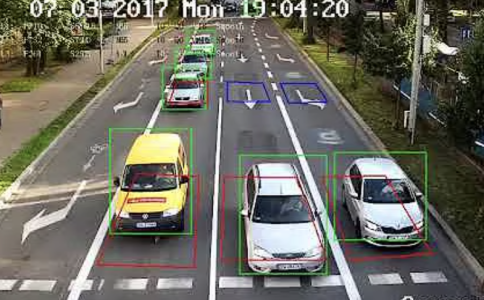This city quietly took down its speed cameras—what’s coming next might surprise you
By
Veronica E.
- Replies 0
A well-known city has taken down all 32 of its existing speed cameras, but the move is not the end of automated enforcement.
Local leaders describe it as a reset that paves the way for a broader, more advanced system.
A new contractor is now responsible for installing upgraded devices to monitor speed, red lights, and school zone violations.
The plan calls for doubling the number of cameras to 64 over the next few years, with three more locations in the coming months
Here's what’s changing, why officials say it matters, and what it could mean for drivers and pedestrians.

Out with the old, in with the new
In Portland, Oregon, city officials say the prior camera contract created operational inefficiencies.
The city has now partnered with Novoa Global, which will provide and manage the new generation of traffic cameras.
Officials describe this updated system as more reliable, with stronger coverage and improved enforcement capabilities.
The first batch of cameras is expected to be active by November 1, with more locations coming online gradually.
Also read: Warning drivers cost him $138—now he’s fighting back
Why the big push for more cameras
Portland’s leadership has reaffirmed its commitment to Vision Zero, the international initiative focused on eliminating traffic-related deaths and serious injuries.
A dedicated Vision Zero Task Force is being launched to evaluate outcomes and report back to the city council each year.
Supporters believe that automated enforcement can reduce risky driving behavior and improve safety near schools and busy intersections.
While 64 cameras is the current goal, some leaders have expressed interest in expanding further if the program proves successful.
Also read: Is your favorite car brand about to be in trouble? Find out which major car manufacturer might collapse in 12 months!
Do speed cameras really work
Studies from other cities suggest automated enforcement can lower speeds and crash rates in areas where cameras are used.
Portland officials point to larger-scale programs—like New York City’s 3,000-camera network—as potential models.
Advocates say these tools allow for consistent enforcement, even when staffing is limited.
The city’s broader strategy includes redesigned streets and traffic calming features to complement camera-based monitoring.
Also read: Traffic light secrets revealed: Expert tips to avoid getting stuck at red!
Concerns about fairness and privacy
Despite the potential safety benefits, not everyone supports the return of traffic cameras.
Some residents worry the system may prioritize fines over safety or unfairly impact lower-income neighborhoods.
Others raise concerns about privacy and accuracy.
City leaders say they’re taking these issues seriously, pledging to prioritize transparency, thoughtful placement, and clear communication about how the program works.
Also read: What’s changing for cyclists in July? A new rule could mean fewer stops—and safer rides
What drivers should expect next
With the old infrastructure removed and the new contract underway, the city will begin installations in phases.
Three initial locations have been identified, and more will follow based on data such as crash frequency and community input.
Officials emphasize that automated cameras are only one piece of a broader effort that includes better street design, public awareness campaigns, and traditional enforcement.
As the city revamps its approach to automated enforcement, the discussion around equity, safety, and accountability continues.
Whether you drive daily, ride a bike, or walk your neighborhood, these changes may affect you.
Read next: These states are quietly leading the way in road quality

What do you think—do traffic cameras make streets safer, or do they go too far? Let us know how enforcement has impacted your area and what you’d like to see done differently.
Local leaders describe it as a reset that paves the way for a broader, more advanced system.
A new contractor is now responsible for installing upgraded devices to monitor speed, red lights, and school zone violations.
The plan calls for doubling the number of cameras to 64 over the next few years, with three more locations in the coming months
Here's what’s changing, why officials say it matters, and what it could mean for drivers and pedestrians.

The city is preparing to roll out 64 upgraded cameras focused on speed, red light, and school zone safety in the coming years. Image Source: YouTube / Hikvision Europe.
Out with the old, in with the new
In Portland, Oregon, city officials say the prior camera contract created operational inefficiencies.
The city has now partnered with Novoa Global, which will provide and manage the new generation of traffic cameras.
Officials describe this updated system as more reliable, with stronger coverage and improved enforcement capabilities.
The first batch of cameras is expected to be active by November 1, with more locations coming online gradually.
Also read: Warning drivers cost him $138—now he’s fighting back
Why the big push for more cameras
Portland’s leadership has reaffirmed its commitment to Vision Zero, the international initiative focused on eliminating traffic-related deaths and serious injuries.
A dedicated Vision Zero Task Force is being launched to evaluate outcomes and report back to the city council each year.
Supporters believe that automated enforcement can reduce risky driving behavior and improve safety near schools and busy intersections.
While 64 cameras is the current goal, some leaders have expressed interest in expanding further if the program proves successful.
Also read: Is your favorite car brand about to be in trouble? Find out which major car manufacturer might collapse in 12 months!
Do speed cameras really work
Studies from other cities suggest automated enforcement can lower speeds and crash rates in areas where cameras are used.
Portland officials point to larger-scale programs—like New York City’s 3,000-camera network—as potential models.
Advocates say these tools allow for consistent enforcement, even when staffing is limited.
The city’s broader strategy includes redesigned streets and traffic calming features to complement camera-based monitoring.
Also read: Traffic light secrets revealed: Expert tips to avoid getting stuck at red!
Concerns about fairness and privacy
Despite the potential safety benefits, not everyone supports the return of traffic cameras.
Some residents worry the system may prioritize fines over safety or unfairly impact lower-income neighborhoods.
Others raise concerns about privacy and accuracy.
City leaders say they’re taking these issues seriously, pledging to prioritize transparency, thoughtful placement, and clear communication about how the program works.
Also read: What’s changing for cyclists in July? A new rule could mean fewer stops—and safer rides
What drivers should expect next
With the old infrastructure removed and the new contract underway, the city will begin installations in phases.
Three initial locations have been identified, and more will follow based on data such as crash frequency and community input.
Officials emphasize that automated cameras are only one piece of a broader effort that includes better street design, public awareness campaigns, and traditional enforcement.
As the city revamps its approach to automated enforcement, the discussion around equity, safety, and accountability continues.
Whether you drive daily, ride a bike, or walk your neighborhood, these changes may affect you.
Read next: These states are quietly leading the way in road quality
Key Takeaways
- One major US city has removed all 32 of its speed cameras and plans to install 64 upgraded units under a new contract with Novoa Global.
- Portland, Oregon, will use the new system to monitor red light, speed, and school zone violations as part of its Vision Zero safety goals.
- Supporters say the technology reduces crashes and speeds, while critics raise concerns about fairness, accuracy, and impact on low-income drivers.
- The first new cameras are expected by November 1, with a phased rollout planned across several years.
What do you think—do traffic cameras make streets safer, or do they go too far? Let us know how enforcement has impacted your area and what you’d like to see done differently.






